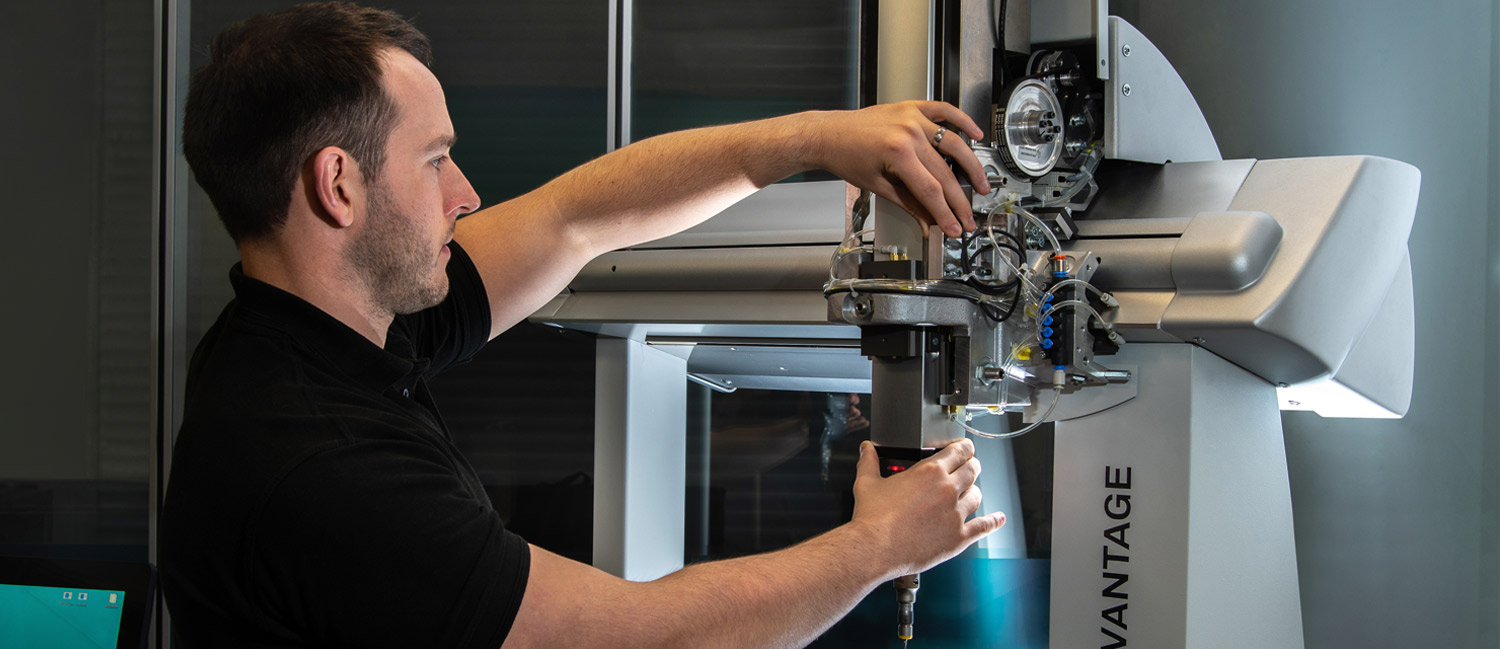Enhancing precision and efficiency: The top 10 reasons to retrofit a CMM

In the world of manufacturing, precision and quality control are paramount. Coordinate measuring machines (CMMs) play a pivotal role in ensuring that the products meet design tolerances and adhere to strict quality standards. Over time, as technology advances, retrofitting a CMM with updated technology components has become a strategic choice for manufacturers aiming to stay competitive and improve their quality control processes.
There are a wide range of benefits from retrofitting an installed CMM, from enhanced accuracy to increased efficiency and reduced downtime. Here are the most important factors pushing manufacturers all over the world to consider a CMM retrofit today.
Retrofitting a CMM is a strategic decision that offers numerous benefits to manufacturers. From enhanced measurement accuracy and improved speed and efficiency to cost savings and compatibility with Industry 4.0 and Smart Manufacturing principles, the advantages are substantial. Moreover, retrofitting allows manufacturers to extend the lifespan of their equipment, stay compliant with industry standards and future-proof their quality control processes. Ultimately, this investment not only ensures the integrity of manufactured products but also positions companies for success in an increasingly competitive manufacturing environment.
There are a wide range of benefits from retrofitting an installed CMM, from enhanced accuracy to increased efficiency and reduced downtime. Here are the most important factors pushing manufacturers all over the world to consider a CMM retrofit today.
Improved measurement accuracy
One of the most significant advantages of retrofitting a CMM with updated technology components is the substantial improvement in measurement accuracy possible with more modern technology – that means a new controller and upgraded sensors. These advanced components can detect even the slightest deviations from design specifications, ensuring that the manufactured parts are within the tightest tolerances.Enhanced speed and efficiency
Upgrading a CMM with modern technology components can significantly enhance efficiency. Older CMMs may suffer from slower processing times and longer inspection cycles, leading to production bottlenecks. By integrating newer sensors such as the HP-L-10.10 laser scanner or software solutions such as Metrology Asset Manager, a retrofitted CMM can measure parts more quickly and minimise downtime, reducing inspection times and increasing the throughput of the manufacturing process.Extended machine lifespan
CMMs are significant investments for manufacturers, and preserving their lifespan is crucial to maximise ROI. Retrofitting a CMM allows companies to extend the machine's operational life by several years. Rather than investing in a brand-new CMM, retrofitting provides a cost-effective solution that keeps existing equipment relevant and functional.Cost savings
Cost considerations are always at the forefront of manufacturing decisions, and retrofitting a CMM with updated technology components is often simply more cost-effective than purchasing a new machine. The expense of a retrofit is typically lower, and the savings in improved efficiency and reduced downtime can quickly offset that initial investment.Compatibility and integration
Production environments are increasingly adopting Smart Manufacturing principles, where the seamless integration of various equipment and systems is essential. Older CMMs may lack the compatibility required to work seamlessly with other modern manufacturing technologies. Retrofitting a CMM allows for the integration of Industry 4.0 technologies, such as automation, data analytics and real-time monitoring, resulting in a more interconnected and efficient production process.Reduced downtime
Downtime is the enemy of productivity in manufacturing. Installing a new CMM often involves a significant amount of downtime as employees must be trained on the new system, and production lines may even need to be temporarily halted. Retrofitting minimises downtime since it can often be completed in stages or during scheduled maintenance, avoiding disruptions to the production schedule.Compliance with industry standards
Industries are subject to evolving quality and safety standards. Retrofitting a CMM allows manufacturers to ensure their processes remain compliant with these standards through upgrades to the most up-to-date software solutions. Modern software often comes with built-in features that facilitate compliance reporting and documentation, simplifying the regulatory process for manufacturers.Improved user experience
Older CMMs may have outdated user interfaces and software that can be challenging for operators to use efficiently. Retrofitting includes updating the user interface, making it more intuitive and user-friendly. This not only improves the overall user experience but also reduces the likelihood of errors caused by operator confusion.Future-proofing
Technology is advancing at an unprecedented rate. Retrofitting a CMM with updated components can be viewed as a form of future-proofing. By keeping the machine up-to-date, manufacturers can adapt to new measurement techniques, software capabilities, and industry trends without the need for a complete overhaul of their quality control processes.Competitive advantage
In today's competitive manufacturing landscape, staying ahead of the competition is vital. Retrofitting a CMM with updated technology components can give manufacturers a competitive edge. It allows them to offer higher quality products, faster turnaround times and improved cost efficiency, which can be powerful selling points in the market.Retrofitting a CMM is a strategic decision that offers numerous benefits to manufacturers. From enhanced measurement accuracy and improved speed and efficiency to cost savings and compatibility with Industry 4.0 and Smart Manufacturing principles, the advantages are substantial. Moreover, retrofitting allows manufacturers to extend the lifespan of their equipment, stay compliant with industry standards and future-proof their quality control processes. Ultimately, this investment not only ensures the integrity of manufactured products but also positions companies for success in an increasingly competitive manufacturing environment.
Would you like to know more?
Click here for further information on our system upgrades and retrofits.